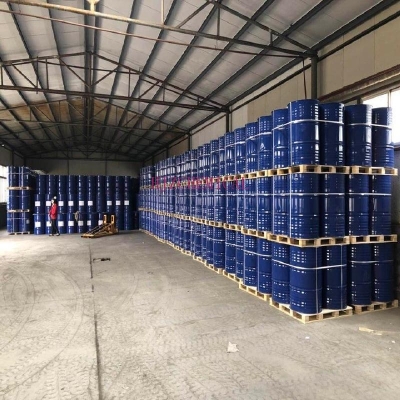-
Categories
-
Pharmaceutical Intermediates
-
Active Pharmaceutical Ingredients
-
Food Additives
- Industrial Coatings
- Agrochemicals
- Dyes and Pigments
- Surfactant
- Flavors and Fragrances
- Chemical Reagents
- Catalyst and Auxiliary
- Natural Products
- Inorganic Chemistry
-
Organic Chemistry
-
Biochemical Engineering
- Analytical Chemistry
- Cosmetic Ingredient
-
Pharmaceutical Intermediates
Promotion
ECHEMI Mall
Wholesale
Weekly Price
Exhibition
News
-
Trade Service
The 10 members of the Association of Southeast Asian Nations (ASEAN) are on track to have solar and other renewables account for 23% of the region's total primary energy supply (TPES) by 2025, but IRENA believes that to achieve this goal, governments need to develop better policy and investment frameworks
.
Z.
Ah, Director General of IRENA; "To meet the 2025 target of 23 percent renewable energy in the region's primary energy mix, Southeast Asian countries will have to significantly increase the deployment
of renewable energy in the power sector and heating, cooling and transportation," Amin said.
”
The increasing deployment of solar and other renewable energy technologies will continue to drive economic growth and improve electricity supply
in Southeast Asia in the coming years.
IRENA said in Renewable Energy Market Analysis: Southeast Asia that the region's annual economic growth rate is now above 4%, which will drive energy demand in the coming years, and renewables will fill this gap
.
Energy consumption in the ASEAN region almost doubled between 2006 and 2015, growing at an annual rate of 3.
4%, with Brunei, Cambodia and Vietnam seeing the fastest
growth in demand.
However, according to IRENA, Indonesia, Malaysia, Thailand and Vietnam accounted for the largest share
of Southeast Asia's total final energy consumption in 2015.
Energy consumption in the region is expected to double
by 2040.
As a result, Southeast Asia faces "amazing energy challenges"
in the coming years.
However, solar energy will be ideal for addressing growing energy needs, with PV installation costs falling by 45%
from 2012 to 2016.
Economically, IRENA acknowledges that scalable renewable energy development will only slightly boost regional GDP
.
From 2006 to 2016, the entire ASEAN economy invested a cumulative $27 billion in renewable energy
.
But beyond simply raising annual GDP, a larger deployment would have other economic impacts
.
"Accelerating the adoption of renewable energy will provide a wide range of environmental, economic and social benefits, including job creation, reducing air pollution and combating climate change," Amin explained, "Policymakers and other development actors should prioritize clean, reliable and affordable energy investments as the backbone
of the region's development.
" ”
IRENA expects that under existing policies, Southeast Asia's renewable energy sector will employ about 1.
7 million people
by 2030.
However, if ASEAN countries start to actively accelerate deployment, the number of jobs could increase to 2.
2 million
.
According to IRENA, renewable energy created about 611,000 new jobs
in 2016.
Liquid biofuels are the largest source of employment, followed by solar and large hydropower
.
Large hydropower currently accounts for more than 75% of the regional renewable energy mix, but its share of regional installed capacity fell to 75%
in 2016, up from 80% in 2000.
Despite the deployment of solar energy over the past few years, solar energy still accounts for only a small fraction of
the region's electricity generation.
Southeast Asia remains very dependent on fossil fuels for power generation and transportation
.
Moreover, some 65 million people in the region still lack reliable power supply
.
IRENA believes that renewable energy sources such as solar can and should play an important role
in improving energy supply in Southeast Asia.
But while all ASEAN countries have set renewable energy targets, the region has yet to truly tap its broad renewable energy potential
.
Fortunately, between 2006 and 2016, renewable energy investment grew to $27 billion, mainly in Indonesia, Malaysia, the Philippines, Singapore, Thailand and Vietnam
.
Thailand is the leader in the region, investing more than $10 billion during this period, followed by Indonesia and the Philippines
.
Bioenergy is the largest investment target, followed by solar and geothermal
.
"Affordable, safe and environmentally sustainable energy is essential for Southeast Asia's development in the coming decades," Amin said, "and through investments in renewable energy, diversification of Southeast Asia's energy supply offers viable options to support expansion and also achieve broader socio-economic and environmental benefits
.
" ”
The 10 members of the Association of Southeast Asian Nations (ASEAN) are on track to have solar and other renewables account for 23% of the region's total primary energy supply (TPES) by 2025, but IRENA believes that to achieve this goal, governments need to develop better policy and investment frameworks
.
Z.
Ah, Director General of IRENA; "To meet the 2025 target of 23 percent renewable energy in the region's primary energy mix, Southeast Asian countries will have to significantly increase the deployment
of renewable energy in the power sector and heating, cooling and transportation," Amin said.
”
The increasing deployment of solar and other renewable energy technologies will continue to drive economic growth and improve electricity supply
in Southeast Asia in the coming years.
IRENA said in Renewable Energy Market Analysis: Southeast Asia that the region's annual economic growth rate is now above 4%, which will drive energy demand in the coming years, and renewables will fill this gap
.
Energy consumption in the ASEAN region almost doubled between 2006 and 2015, growing at an annual rate of 3.
4%, with Brunei, Cambodia and Vietnam seeing the fastest
growth in demand.
However, according to IRENA, Indonesia, Malaysia, Thailand and Vietnam accounted for the largest share
of Southeast Asia's total final energy consumption in 2015.
Energy consumption in the region is expected to double
by 2040.
As a result, Southeast Asia faces "amazing energy challenges"
in the coming years.
However, solar energy will be ideal for addressing growing energy needs, with PV installation costs falling by 45%
from 2012 to 2016.
Economically, IRENA acknowledges that scalable renewable energy development will only slightly boost regional GDP
.
From 2006 to 2016, the entire ASEAN economy invested a cumulative $27 billion in renewable energy
.
But beyond simply raising annual GDP, a larger deployment would have other economic impacts
.
"Accelerating the adoption of renewable energy will provide a wide range of environmental, economic and social benefits, including job creation, reducing air pollution and combating climate change," Amin explained, "Policymakers and other development actors should prioritize clean, reliable and affordable energy investments as the backbone
of the region's development.
" ”
IRENA expects that under existing policies, Southeast Asia's renewable energy sector will employ about 1.
7 million people
by 2030.
However, if ASEAN countries start to actively accelerate deployment, the number of jobs could increase to 2.
2 million
.
According to IRENA, renewable energy created about 611,000 new jobs
in 2016.
Liquid biofuels are the largest source of employment, followed by solar and large hydropower
.
Large hydropower currently accounts for more than 75% of the regional renewable energy mix, but its share of regional installed capacity fell to 75%
in 2016, up from 80% in 2000.
Despite the deployment of solar energy over the past few years, solar energy still accounts for only a small fraction of
the region's electricity generation.
Southeast Asia remains very dependent on fossil fuels for power generation and transportation
.
Moreover, some 65 million people in the region still lack reliable power supply
.
IRENA believes that renewable energy sources such as solar can and should play an important role
in improving energy supply in Southeast Asia.
But while all ASEAN countries have set renewable energy targets, the region has yet to truly tap its broad renewable energy potential
.
Fortunately, between 2006 and 2016, renewable energy investment grew to $27 billion, mainly in Indonesia, Malaysia, the Philippines, Singapore, Thailand and Vietnam
.
Thailand is the leader in the region, investing more than $10 billion during this period, followed by Indonesia and the Philippines
.
Bioenergy is the largest investment target, followed by solar and geothermal
.
"Affordable, safe and environmentally sustainable energy is essential for Southeast Asia's development in the coming decades," Amin said, "and through investments in renewable energy, diversification of Southeast Asia's energy supply offers viable options to support expansion and also achieve broader socio-economic and environmental benefits
.
" ”







